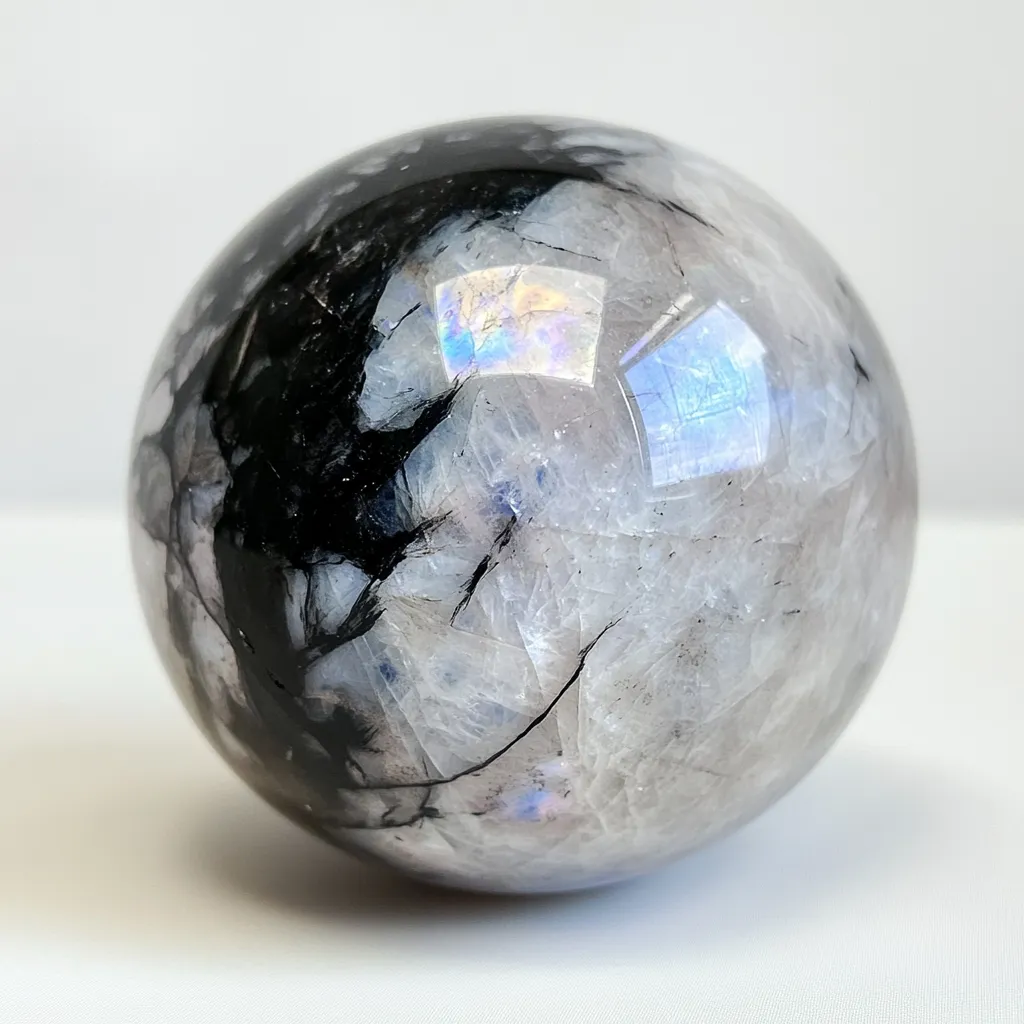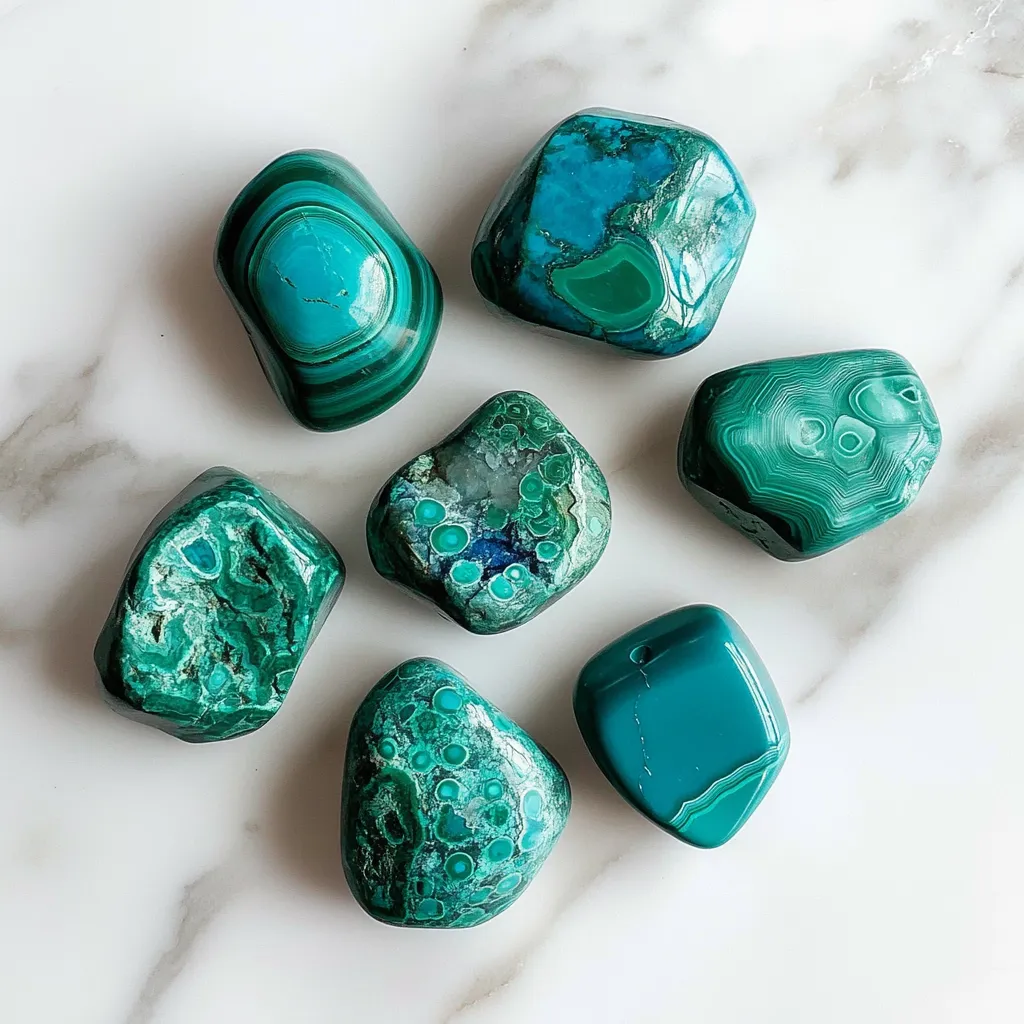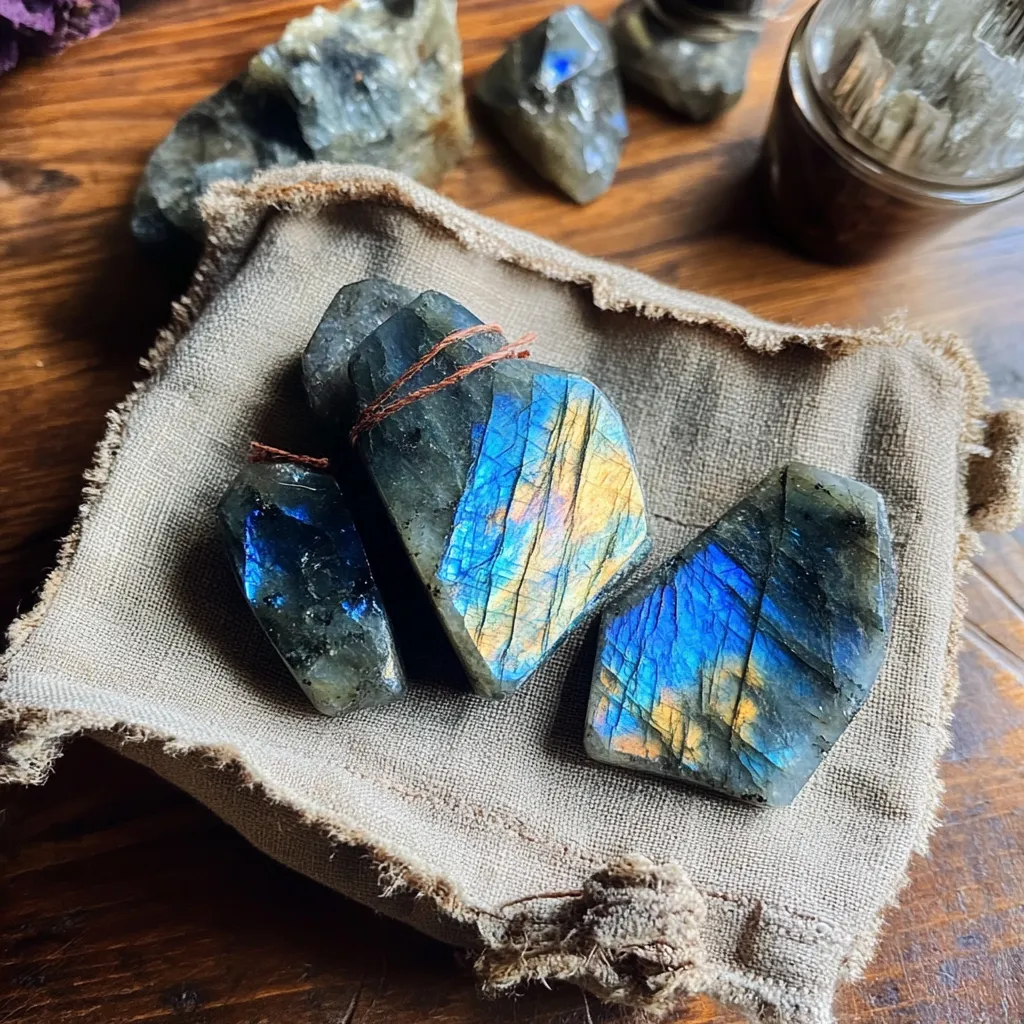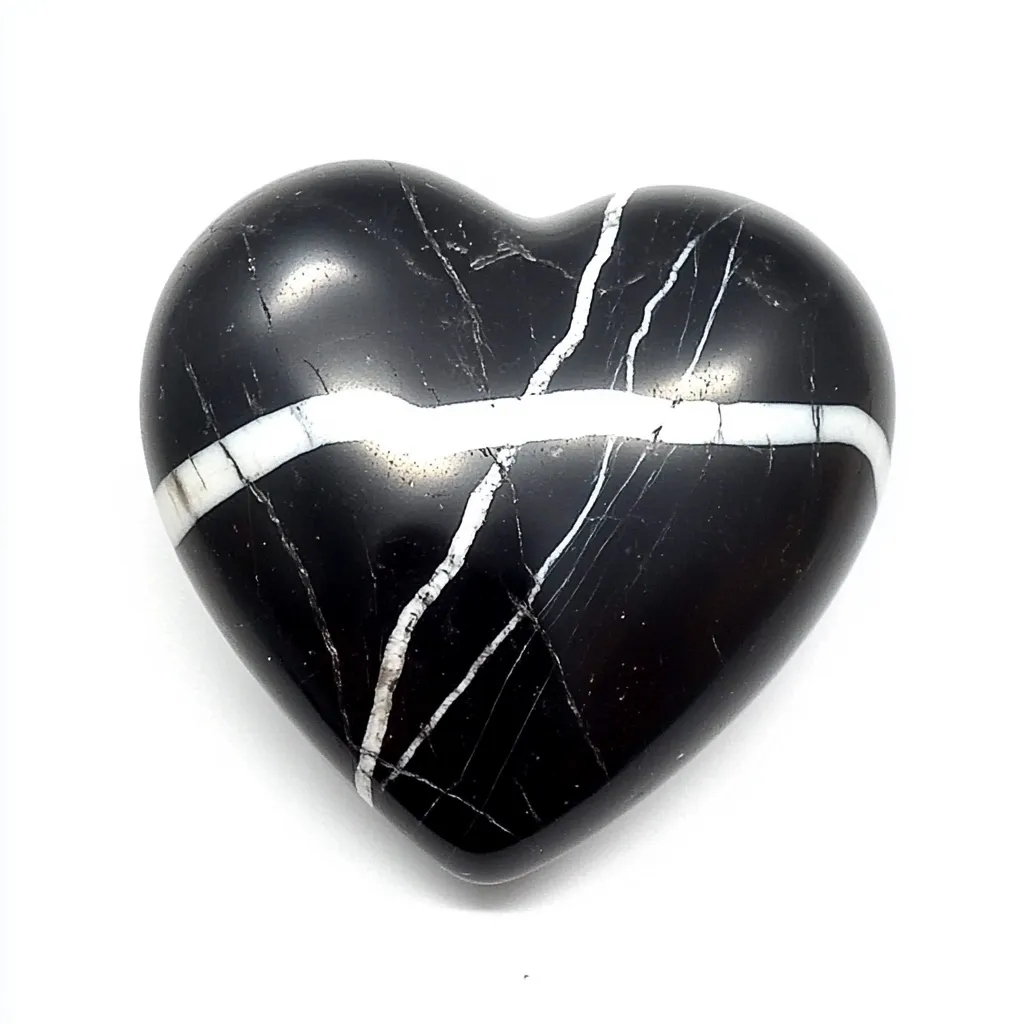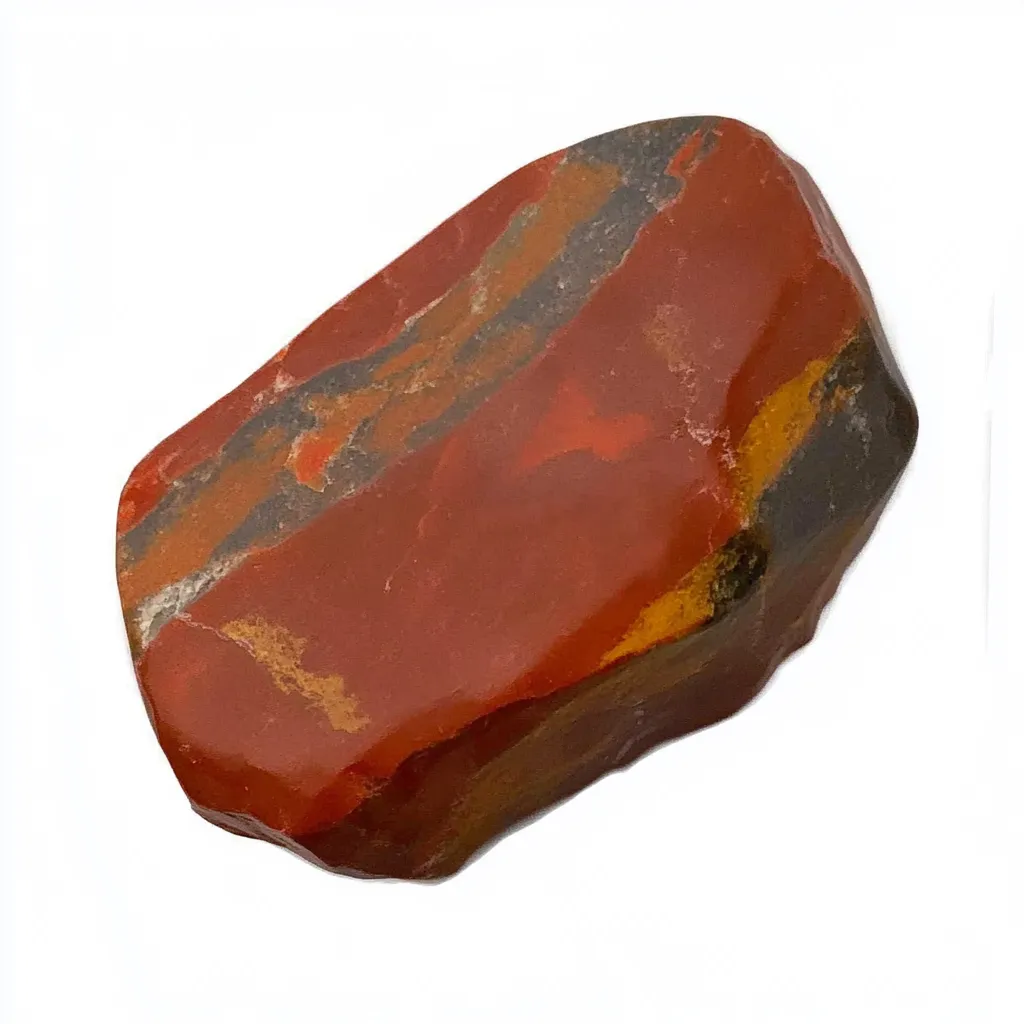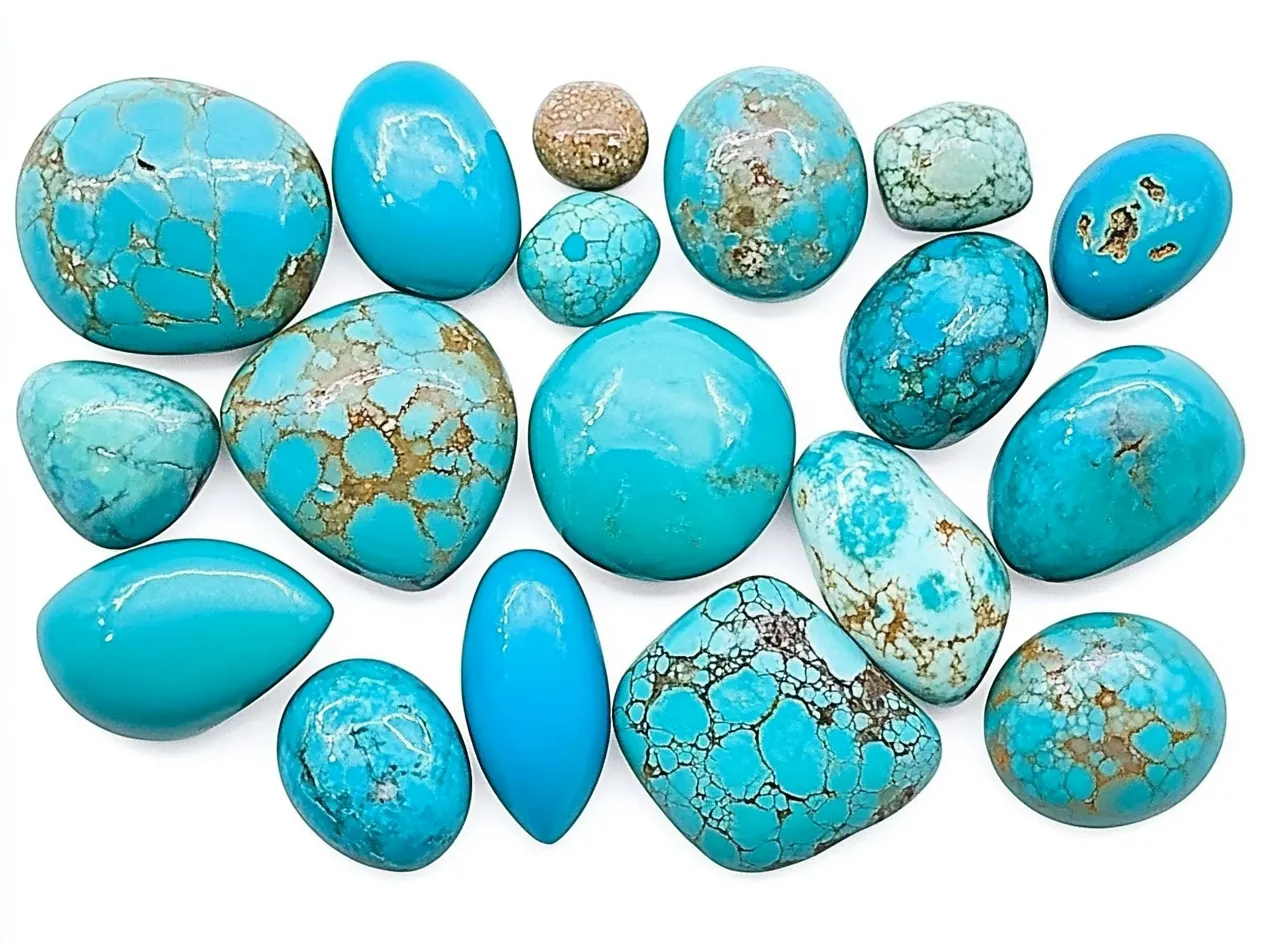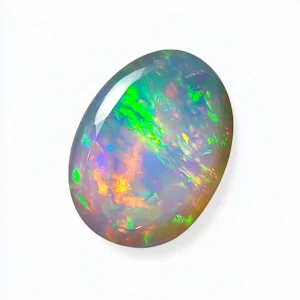

Opal Pronunciation:
The proper pronunciation of Opal is “OH-puhl.”
Hardness:
Opal has a hardness on the Mohs scale of 5.5 to 6.5, meaning it is softer than quartz but harder than most gemstones made from organic materials. Because its moderate hardness places opal in a kind of purgatory for strength, it can only be handled safely if one is careful. It should be kept in any number of secure places that don’t tempt the otherwise stunning opal to leave its enclosure.
Table 1: Opal’s Hardness and Water Content
| Feature | Value |
|---|---|
| Hardness (Mohs scale) | 5.5 to 6.5 |
| Water Content | 3% to 21% |
One of the distinct features of opals is their high water content, which can range from 3% to 21%. This trait makes them more delicate in terms of handling temperature and dehydration. To keep opals stable and in top condition, it’s recommended to keep them in a well-controlled environment that doesn’t stray into extremes of temperature, dryness, or direct sunlight.

Lustre:
Opal’s composition and structure determine its luster. Most opals glisten with a vitreous-to-subvitreous luster, providing them with a slightly glassy visage. Certain types, especially common opals, might have a waxy or pearly gemmy glow.
What distinguishes opal from other gemstones is its world-famous play-of-color, an optical effect where bursts of lightning hues cut across the surface of the stone. This phenomenon happens because of the way opals are put together inside. Opals are like sapphires in that they’re not a single substance. Sapphire is a variety of corundum, which is composed of aluminum oxide (Al₂O₃). Corundum has a specific internal arrangement that classifies it as a distinct mineral. But opal isn’t a single substance, either. Opal is mostly silica (SiO₂) with some water thrown in for good measure.
Crystal System:
Unlike several gemstones that possess a definite crystal system, opal is classified as amorphous. This classification means it does not form a regular, repeating crystalline structure as do some other gemstones. Instead, opal is made up of microscopic silica spheres stacked in a non-uniform pattern, which is one reason that opal might be said to have a more variable appearance than many other gems.
Table 2: Opal’s Features
| Feature | Description |
|---|---|
| Crystal System | Amorphous |
| Structure | Microscopic silica spheres in non-uniform pattern |
| Cleavage | None |
The opal’s lack of a definite atomic arrangement gives it an unusual appearance and accounts for its absence of cleavage. Without that built-in weakness, the opal is less likely to crack or split apart when stresses are applied. Opals are thus much more likely to be damaged by false security on the part of the owner. These gems should be handled as delicately as the atoms that comprise them.

Etymology:
The term “opal” comes from the Latin word “opalus,” which in turn comes from the Greek word “opallios,” meaning “to see a change of color.” Some sources trace its origins even further back to the Sanskrit word “upala,” which also means “precious stone” or “gem.” This reference is significant because the opal family of minerals is close to the crystal structure of quartz and other precious stones.
Opal has been respected for its magical qualities throughout history. The ancient Romans viewed it as a symbol of hope and purity. In contrast, medieval Europeans thought it had the virtues of all the colored gemstones it resembled.
Location:
Opal is discovered in many places around the world, but the most renowned and superior specimens originate from Australia, which yields more than 90% of the opals found on Earth. Prominent mining regions in Australia include Lightning Ridge (famous for black opals), Coober Pedy, and Andamooka.
Among the other prominent opal sources are Ethiopia, whose vibrant Welo opals have rapidly gained stature within the gem and jewelry market; Mexico, known for its opals with fire-like colors; and Brazil, Honduras, and the United States (notably, Nevada and Idaho), which also produce distinct varieties of opal—from the translucent Ethiopian opals to whatever kind of mesoamerican opal you’re able to create in a hand-assembled vat.
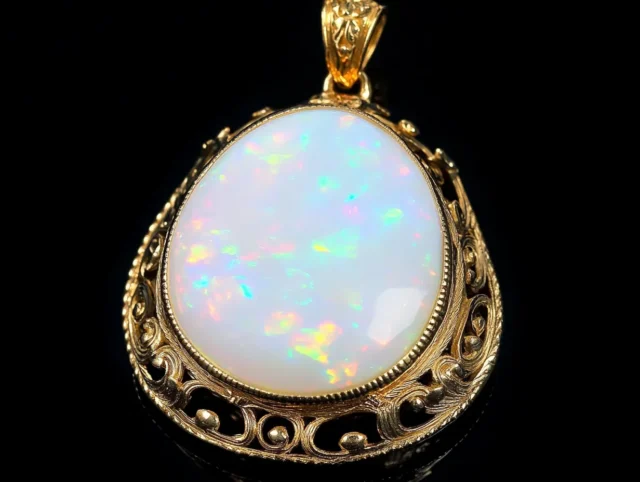
Meaning & Energy:
For a long time, people have associated opal with creativity, intuition, and emotional healing. Wearers believe it enhances imagination and clarity of thought. Artists and writers often wear opals when seeking the kind of inspiration that would allow their next project to take shape.
Opal is related to the crown chakra at a metaphysical level. The height of consciousness and spiritual awareness are governed by this chakra. Some traditions associate opal with the heart chakra, which promotes love and emotional equilibrium. In several cultures, opal has been considered a stone of good fortune. However, superstitions from the 19th century incorrectly labeled it as a bad luck emblem—an idea that has mostly been refuted today.
Whether you’re enticed by opal’s incredible beauty or the more profound meanings associated with it, this gemstone is a perennial favorite that offers the appearance of unparalleled uniqueness and vibrant energy.

Varieties of opal gemstones
One of the most mesmerizing gemstones is opal, displaying a play of colors known as “opalescence.” There are several varieties of opals, each with distinct features. The most famous is the precious opal, exhibiting a stunning color range due to light diffraction within its silica layers. Black opals, found most often in Australia, are the rarest and most valuable, displaying vibrant colors against a dark background. Meanwhile, white opals have a milky, translucent body and exhibit a more pastel flash of colors.
In addition to those mentioned, we also have fire opals, which are known for their warm colors in the orange, red, and yellow spectrum and typically come from Mexico. Unlike their precious cousins, fire opals can be transparent or translucent and often lack the play-of-color for which opals, in general, are famous. Another intriguing variety is boulder opal, which forms within ironstone. Boulder opal challenges the belief that opals can only form in a homogeneous environment by producing a striking contrast between the colorful opal veins and the host rock.
Opal Varieties Comparison
| Opal Type | Characteristics | Origin | Notable Features |
|---|---|---|---|
| Precious Opal | Stunning color range, light diffraction in silica layers | Worldwide | Vibrant, colorful play-of-color |
| Black Opal | Rare, vibrant colors against dark background | Australia | Most valuable and rare |
| White Opal | Milky, translucent with pastel flashes of color | Worldwide | Soft, subtle color play |
| Fire Opal | Warm colors: orange, red, yellow | Mexico | Transparent/translucent, lacks play-of-color |
| Boulder Opal | Forms in ironstone, contrasting colorful veins | Australia | Unique formation in host rock |

Ancient Myths
For centuries, myths have enshrouded opals, with some regarding them as symbols of luck and others fearing them as omens of misfortune. In ancient Rome, opals were considered symbols of hope and purity and were believed to bring good fortune to their possessors. The Roman scholar Pliny the Elder described opals—and not too inaccurately—as stones that contained all the colors of the other gems and were therefore of unique and unparalleled value.
Yet, in the Middle Ages, opals suffered an undeserved reputation. They were thought by some to bring bad luck, a belief given credence by the novel Anne of Geierstein by Sir Walter Scott. In that book, an opal was connected to the kind of calamity that has, on one occasion and in one place, given the jewel a dismal reputation. Conversely, ancient Australian Aboriginal legends regard opals as sacred, believing the gems were formed when a divine being came down to earth.
Physical Opal Gemstone Healing Properties
Physical healing, especially dealing with the eyes, skin, and circulatory system, is what opals are linked with most directly. Opals are believed to heal skin issues, eye problems, and improve the body’s blood flow—even inhibiting bad cholesterol. Opals are also said to significantly enhance vision in the person wearing it. This could just be because the stone is so clear that someone could see better with it on, but there are definitely more ethereal reasons for their supposed supernatural vision benefits.
Another captivating facet is its supposed part in enhancing metabolism and energy levels. Some crystal healers say that opal boosts blood circulation and aids in detoxification, making it a stone of choice for overall vitality. But, as with many things crystal-related, these ideas rest more on the shoulders of belief than on solid science. “There might be some validity to these ideas, but there’s really no way to know for sure,” says Kelsey. “Crystals are not listed in any medical text or used in any established medical practices, and that’s worth taking note of.”

Opal’s Physical Healing Properties
| Healing Area | Believed Effect | Related to Opal Variety |
|---|---|---|
| Skin Issues | Healing of skin problems | All varieties |
| Eye Problems | Enhances vision, believed to improve eye health | All varieties |
| Circulatory System | Improves blood circulation, inhibits bad cholesterol | All varieties |
| Metabolism & Energy | Boosts metabolism, enhances energy | All varieties |
Emotional Opal Gemstone Healing Properties
Emotional well-being is often associated with opals. They are said to amplify emotions and encourage true self-expression. And that is the rainbow, which lights up every perspective. Opals are more than just beautiful stones; they possess a unique personality. Crazy enough, that may be why they fit so well into one of the oldest human narratives: ours.
One of the most famous emotional boons of opal is the one that connects it to creativity and inspiration. Many artists, writers, and musicians keep opals to draw upon the imaginative energy the stone is said to contain. It is also believed to foster love and passion, making it a popular stone among couples. Its nature as a sunstone (a type of stone that forms in the presence of heat, light, or both) makes it especially good for this. One caveat, though: Opals can reflect the negative side of emotions as well, especially if not used mindfully.

Chakra Opal Gemstone Healing Properties
In chakra healing, assorted opals are associated with different energy centers in the body. White and blue opals are commonly linked to the crown chakra, where they promote spiritual awareness and help maintain a sense of inner peace. Fire opals, with their warm colors, resonate with the sacral chakra and seem to enhance our passion, creativity, and emotional balance.
At the same time, green opals vibrate with the heart chakra, promoting love and compassion, whereas black opals are often associated with the root chakra and are thought to offer a sense of stability and protective energy. Opals are said to bring balance to these energy centers and help their wearers achieve a state of harmonious wellness.
Opal and Chakra Healing
| Opal Variety | Associated Chakra | Believed Effect |
|---|---|---|
| White/Blue Opal | Crown Chakra | Promotes spiritual awareness, inner peace |
| Fire Opal | Sacral Chakra | Enhances passion, creativity, emotional balance |
| Green Opal | Heart Chakra | Promotes love, compassion |
| Black Opal | Root Chakra | Offers stability, protective energy |

Questions and Answers
Further Insights on Opal
Opal Color
Opals are well-known for their fascinating play-of-color, displaying a range of colors depending on their makeup. The colors most desired are the bright reds, deep blues, electrifying greens, and fiery oranges. An opal’s body tone, ranging from black to white, significantly influences its appearance and value.
| Color | Description |
|---|---|
| Bright Reds | These colors are highly prized and stand out in any jewelry setting. |
| Deep Blues | Often seen in high-quality opals, this color is highly sought after. |
| Electrifying Greens | A vibrant color that creates striking contrast against other hues. |
| Fiery Oranges | These colors are commonly seen in fire opals and are associated with warmth. |
Black Opal Gem
Lightning Ridge, Australia, is the primary source of black opals, which are among the most valuable opals. Their dark body tone enhances the vivid color play of the stones, making them rare and intensely prized by collectors and jewelers worldwide.
Purple Opal
Less common than the others, purple opals are admired and valued for their lavender to deep violet colors. Found in Mexico and the United States, these opals are often linked with spiritual awakening and creativity and are a favorite of metaphysical enthusiasts.
Opalite vs. Opal
Opalite is a synthetic glass that is made to look like natural opal, missing, however, the signature sparkle.
Natural opal, by contrast, is formed in the earth over many millions of years and contains spheres of silica that are responsible for its play-of-color.
Opal Mines
Mines that produce opals can be found globally, with large deposits in Australia, Ethiopia, Mexico, and the U.S. indeed, the majority of the world’s opals come from Australia, specifically from famous mines like Coober Pedy and Lightning Ridge. However, Ethiopian opals have also gained significant attention in recent years due to their intense colors and equally impressive varieties.
| Country | Notable Mines | Characteristics |
|---|---|---|
| Australia | Coober Pedy, Lightning Ridge | Famous for vibrant and high-quality opals. |
| Ethiopia | Various mines | Known for rich colors and unique patterns. |
| Mexico | Various mines | Famous for fire opals with intense colors. |
| U.S. | Opal Hill Mine, Peacock Opal Mine | Known for high-quality fire opals. |
The most expensive opal
The “Virgin Rainbow” opal is among the most costly opals ever known, with an appraised value of over $1 million. This wonderful black opal, found in Australia, features an incredible play-of-color that makes it something of a collector’s piece and a rarity.
- Valued at over $1 million
- Found in Australia
- Black opal with an intense play-of-color
Fire Black Opal
Black opals are opals that have a dark body tone. Fire opals, however, combine that darkness with fiery red, orange, or yellow colors in electric flashes. Dramatic even by opal standards, their contrast makes them rare and some of the most desired stones around.
Black Opal Meaning
Black opals symbolize protection, keep their wearers safe from harm, and offer an air of mystery, since not much is actually known about the stone, which has a history of being avoided by artists and those in the spiritual world—”opals are said to bring bad luck!”—when not wearing them, obviously. The symbolism associated with opals is significant. Bad luck and danger are the stuff of imagination. They enhance intuition and creativity.
Orange Opal
Known as fire opals, the orange-hued variety of opal is mainly found in Mexico. Their warmth and sunset-like glow are symbols of energy, passion, and motivation, making them a potent gemstone for those who need a little extra push in the vitality department. Despite their electrifying color, orange opals are quite rare.
Brown Opal
Although they tend to be less well-known, brown opals present earthy colors combined with a subtle play of color. These opals are often set into jewelry that has a rustic, natural theme, giving them a bold but warm and grounded aesthetic.
White Opal Stone
The most frequently encountered opals are white ones, which have a very light or milky body tone and are imbued with vibrant bursts of color. They are found mainly in South Australia and are known for their dreamy appearance. They are used primarily in classic opal jewelry and are known as common opals. The term “common” refers to their abundance and accessibility, not their inferior quality or beauty.
Fake opal vs. real opal
Imitation opals, which are made using several different methods, also do not have the internal structure of a real opal. Imitation opals may be colored and display a contrasting color, but they do not appear to be a real opal when viewed closely. A true opal, when viewed with a 10x loupe, has a somewhat rough surface and displays a play of color that is not even and is not in any repeated pattern.
Peacock Opal Mine, Nevada
The Peacock Opal Mine in Nevada is a well-known location for vibrant, multi-colored opals. This mine is a go-to destination for rockhounds seeking specimens of high quality with an exceptional play of color.
Birthstone Opal Month
The birthstone for October is opal, a symbol of hope, purity, and creativity. While people sometimes associate other gemstones with this month—for instance, the tourmaline, which some say is an alternate birthstone for October—most jewelers stick with opal, probably because gem-quality tourmalines are difficult to come by.
Meaning of Fire Opal
The fire opal, with its fiery orange and red hues, symbolizes passion, vitality, and courage. Many believe fire opals boost confidence. They help you overcome fear and self-doubt.
Opal Hill Mine
Opal Hill Mine, in California, is well known for its fire opals and quartz crystals. The mine attracts rockhounds and gem enthusiasts who are determined to uncover unique, rare specimens.
Red Opal Stone
Red opals are rare and considered to be of the highest value. When they display color, it is often something like intense crimson or scarlet. These gems do not have the same kind of play of color that most opals have; instead, they’re like a solid, intense swath of color. And that, really, is how one should view a red opal: as a solid, intense gemstone.
Boulder Opal Rough
Found in Queensland, Australia, boulder opals are often sold in the rough. They are unique because opal forms within ironstone, creating beautiful and dramatic patterns that enhance their appeal.
Virgin Valley Opal Mines
Nevada’s Virgin Valley is famed for its unique black fire opals. Opals that are found here can exhibit colors that are not only the most intense of any opal but also the type of color that is most typically associated with neon signs.
Blue Peruvian Opal
In contrast to conventional opals, Blue Peruvian Opals lack play-of-color. Instead, they offer a calming, opaque blue appearance. Much of their tranquil beauty stems from that soporific elixir nature bestows in the forms of opals, which are associated with calmness, communication, and emotional balance.
Oregon Green Opal
Oregon Green Opals stand out due to their striking greenish hue. These opals are located in the opal fields of western North America and are said to have mystical qualities that could help foster a sense of harmony between the wearer and their natural surroundings.

